#Camassia scilloides
Explore tagged Tumblr posts
Text






It's still the species rich dry hillside that I know and love; though, only half of the hyacinth was in bloom at the time.
Alluvial mesic riparian flat woods meets mixed conglomerant and partially concreted dry hillside of the Great Miami miander.
Here is one of Hamilton co. Ohio's greatest displays of unique flora. The hill isnt an ecotone and the change isnt abrupt though the niche of a few species is noticable and subtle. In bloom was blue eyed mary, catch bedstraw, both starry and TN chick weed, spreading chervil, sweet anise root, black snake root, and dwarf lark spur. The forrest it's self is home to much more blooming at the same time. For this specific spot though, the hyacinth is in the spot light.
#camassia#ohio#wildflowers#camassia scilloides#botany#plantblr#ecology#cottagecore#meadow#meadowcore#kawaii
73 notes
·
View notes
Text

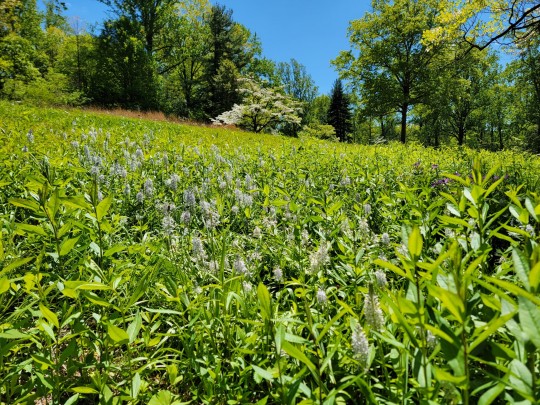
Eastern Camas - Camassia scilloides
Eastern Camas/Wild Hyacinth is a lesser known relative to the famous western species C. quamash. While this plant is native throughout the Midwest, especially around the Mississippi river, it is generally restricted to wet meadows, stream banks and the occasional open woodland with moist acidic rich soils.
The Eastern Camas is a perennial bulb forming member of the asparagecea family, unlike the Hyacinth which the common name derives this species only really propagates via seed. In terms of appearance the plant typically holds a single raceme (think stalk) that ends in 30-40 flowers. As for size of the plants scientific studies have found a noticeable morphology in appearance between where said seeds are sourced. Seeds collected from the Ozark populations tend to have taller individuals than those found in Illinois bottomlands, this study suggests that Camas populations found further south adapted without glaciation and inhabited a location for a much longer time period without physical change. What an interesting hypothesis!
Camas are well known for their edible bulb, the western 'common Camas' is famous for its ethnobotanical use amoung indigenous peoples, the Eastern Camas is no different. The Camas bulb is edible, when eaten raw it can be gummy but sweet, indigenous methods of preparation require a slow cook over 48 hours which render the bulb to a flavor reminiscent of chestnuts. Bulbs can also be dried and made into flour as well. I would never remove camas from their habitat personally: I enjoy their beauty, I'm not indigenous and have heard members of eastern tribal diaspora upset over the removal of their ancestors' foodway, and most importantly beginners often confuse this species with the death camas: Zigadenus venenosus.
So if you live around the Midwest, look for beautiful fields popping up around April-May, you may get a chance to see something wonderful.
#eastern camas#wet meadows#Camassia scilloides#plant profiles#native plants of the midwest#edible flora
12 notes
·
View notes
Text

Camassia scilloides / Atlantic Camas at the Sarah P. Duke Gardens at Duke University in Durham, NC
#Camassia scilloides#Camassia#asparagaceae#Atlantic Camas#Eastern Camas#Wild hyacinth#camas#Native plants#Native flowers#Plants#Flowers#Nature photography#photographers on tumblr#Sarah P. Duke Gardens#Duke Gardens#Duke University#Durham#Durham NC#North Carolina#🌺🌻
3 notes
·
View notes
Text
Camassia Scilloides - Wild Hyacinth
Native
Asparagaceae (asparagus family)


Bloom: April
Notes: purchased and planted in fall of 2023, really soft blue/white flowers that seem to only last a day or two,surprisingly the ones planted in the stonier section are doing better than the ones in the more organic soil.
Links:
#camassia Scilloides#atlantic camas#wild hyacinth#asparagaceae#asparagus family#in yard#native#illinois native plant#white#blue#april#planted 2023#z17#i planted this
0 notes
Text

It's Tell a Friend Friday! Please enjoy this picture of Atlantic camas (Camassia scilloides) I found in Missouri.
Then tell someone you know about my work–you can reblog this post, or send it to someone you think may be interested in my natural history writing, classes, and tours, as well as my upcoming book, The Everyday Naturalist: How to Identify Animals, Plants, and Fungi Wherever You Go. Here’s where I can be found online:
Website - http://www.rebeccalexa.com
Rebecca Lexa, Naturalist Facebook Page – https://www.facebook.com/rebeccalexanaturalist
Tumblr Profile – http://rebeccathenaturalist.tumblr.com
BlueSky Profile - https://bsky.app/profile/rebeccanaturalist.bsky.social
Twitter Profile – http://www.twitter.com/rebecca_lexa
Instagram Profile – https://www.instagram.com/rebeccathenaturalist/
LinkedIn Profile – http://www.linkedin.com/in/rebeccalexanaturalist
iNaturalist Profile – https://www.inaturalist.org/people/rebeccalexa
Finally, if you like what I’m doing here, you can give me a tip at http://ko-fi.com/rebeccathenaturalist
#Tell a Friend Friday#camas#wildflowers#native wildflowers#native plants#plants#flowers#ecology#botany#nature#nature photography#Missouri#Ozarks#naturalist
15 notes
·
View notes
Text
American Apollon 🪻
(UPG)

Info after page break:
I decided to make this collage for fun bc I wanted to showcase a more "local" (American) approach to Him. I live in America so I chose American native plants + animals and added a banjo in there since He is the God of music after all. Obv this is UPG so take with a grain of salt.
1. Turkey vulture
2. Camassia Scilloides
3. Sonoran king snake
4. The Banjo Player by William Sidney Mount
5. Apollon
6. Lyreleaf sage
7. American tulip tree
8. Carolina larkspur
9. Eastern box turtle
#polytheism#polytheist#paganism#flowers#local craft#apollo deity#apollon#apollo#hellenic polythiest#hellenic deities#greek gods#greek polytheism
11 notes
·
View notes
Text
April 17, Day 107/108
Day 107 2015

#pretty #pink #flowers #wildflowers #beautiful #nature #outdoors #spring #afternoon #picoftheday #project365 #day107
Day 108 2016

Beads and spools
#beads #spools #craft #create #imagine #shadesofspring #pastels #april #picoftheday #project365 #day108
Momma is so very talented but she really needs to give me my octopus spool 🤪
Day 107 2017
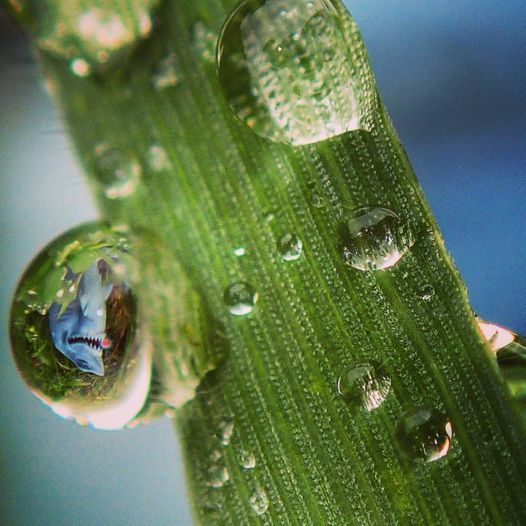
Bruce is dew
#getcreative #grass #water #dew #macro #upclose #refraction #nature #outdoors #spring #bruce #shark #gooddaybruce findingnemo #april #picoftheday #project365 #day107
Day 107 2018
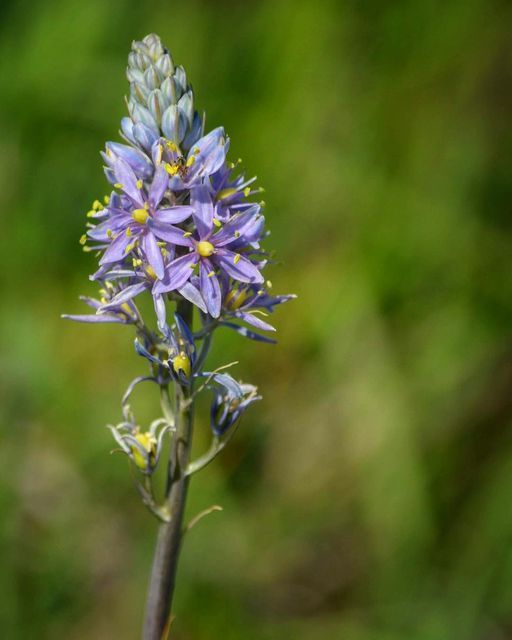
Wild Hyacinth (Camassia scilloides)
#wildhyacinth #beautiful #purple #flowers #wildflowers #texas #spring #nature #outdoors #april #bouquet #picoftheday #project365 #day107
Day 107 2019

This is all me ❤️
#baby #seaturtle #babyseaturtle #tiny #cute #hatchling #release #wild #beach #ocean #free #poetry #haiku #nationalhaikupoetryday #april #april17 #2019 #nationalday #nationaldaycalendar #picoftheday #project365 #day107
Day 108 2020
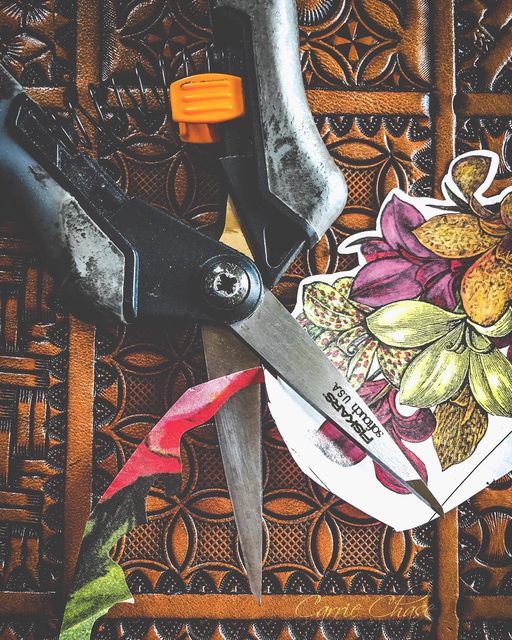
Well loved snippers
#art #artsupplies #scissors #snipsnip #paper #leather #journal #journalit #april #april17 #2020 #picoftheday #project365 #day108
Day 107 2021
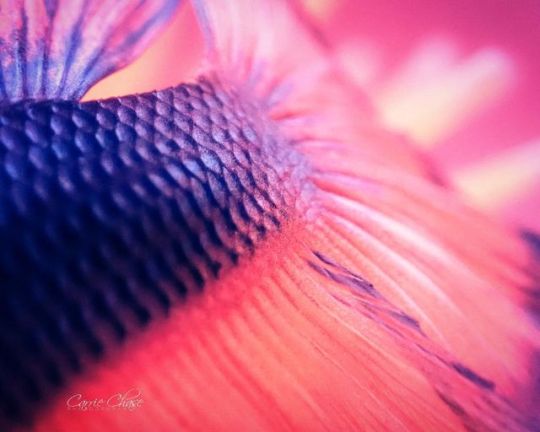
David is part merman 🧜🏻♂️
#david #betta #bettafish #fish #merman #tail #scales #color #lush #april #april17 #2021 #picoftheday #project365 #day107
Day 107 2022

I didn’t get to see all of my family today but it was nice seeing the one I did. Love you all 💖 Hoppy Easter!
#easter #family #nieces #love #april #april17 #2022 #picoftheday #project365 #day107
Day 107 2023

Parched
#beached #clay #sand #shells #shippinglane #galveston #parched #magnus #magnifytheoutdoors #april #april17 #2023 #picoftheday #project365 #day107
Day 108 2024
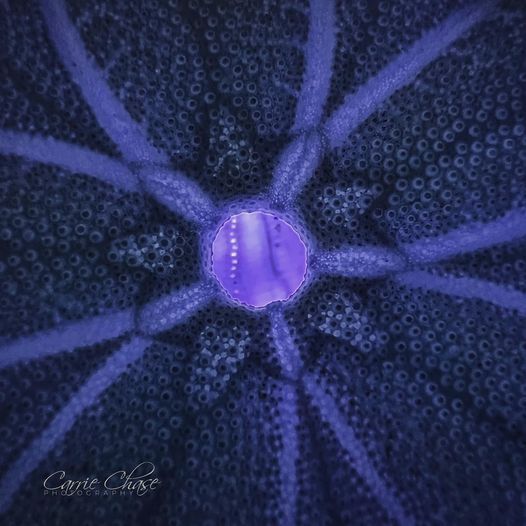
Try to guess without looking at the tag (I’ll put it at the end if you wanna try) Hint it’s a repeated theme…
#dailytheme #differentperspective #macro #upclose #litup #seacreature #sanddollar #april #april17 #2024 #picoftheday #project365 #day108
I turned this one upside down and lit it up with a uv flashlight! Just wow!!
0 notes
Text

Yesterday, in the garden. The blue are squill, and the white are not camassia; they're pushkinia scilloides!
(They're very vigorous, about 6" tall, and peaking now, while the squill are still finding their way out of the dirt, and only 3" tall.)
0 notes
Photo




Wild hyacinth (Camassia scilloides) has edible bulbs.
More info on Plants for a Future.
Special note: while this species has at least one edible part, some plants it resembles do not and are poisonous or even deadly.
The death camas (Toxicoscordion venenosum) is one example:

And the garden hyacinth (Hyacinthus orientalis) is another:

Don’t let the common names fool you; the wild hyacinth and garden hyacinths are not closely related.
Thankfully the range of the death camas and the wild hyacinth don’t overlap. Garden hyacinths tend to stay in the garden and the richness of colour isn’t likely to be found in the wild hyacinth. Still, it’s not impossible to find either the death camas or garden hyacinth where they don’t belong. Forage safely.
#native Ontario plant species with edible parts#flowering plants#flowers#edible plants#native North American species#plants I want#wild hyacinth#Atlantic camas#Camassia scilloides#camases#Canadian starches and thickeners#dangerous lookalikes#death camas#Toxicoscordion venenosum#garden hyacinth#Hyacinthus orientalis
1 note
·
View note
Photo






More photos from an excursion to Blackburn Bluffs Preserve in northern Arkansas in April 2021.
#botany#biology#ecology#mycology#wildflowers#bees#forest#dogwood#camassia#mushrooms#bluffs#anthers#sunlight
4 notes
·
View notes
Photo

Day 18: Wild Hyacinth
Camassia scilloides
#wildflowers#wildlife#flowers#flower#michigan#puremichigan#native#nature#illustration#illustrator#digital illustration
24 notes
·
View notes
Photo





Drier hillside, Richardson preserve, section of depositional karst conglomerate based hillside. Open woodland sections with dry soils surrounded by mesic zones often have their own unique forbe community compared to the rest of the forest. In this photoset the light glazes over many different members that make up this mixing composition. twords the base of the hill we see normal mesic riparian floodplain and flat species such as Phlox divaricata, Thalictrum thalictroides, Geranium maculatum, Polemonium reptans, Polemonium reptans. A species more prominent in mesic areas yet mixed into all sections of the forest floor mosaic is Delphinium tricorne, Collinsia verna ( an annual) too. The drier sections show signs of mainly Packera obovata, though what’s also apparent in the drier sections is what’s to come, Camassia scilloides and Allium cernuum.
Adaptation to water requirements and being more associated to a niche based on soil chemistry can be a fairly obvious thing once you see your plant communities change, species do prefer an active site and will “compete” or rather fill in the niche better, have higher fetality(reproductive success of seed made), recruitment ( new individuals that actively are found and may establish) and Natality( a true function of recruitment, a rate at which the species propagates(new recruits/total population in area)), if site requirements favor the species over another that is coevolved in the same region. Looking at these mosaics also gives you a spatial reference for the size of the habitat/deposit/site of interest and may even tell you the potential for other species that are of more interest that could be hidden. Zones where more establishment long term meet a zone or area with high average mortality or low average species specific density form a theoretical fluctuating border to the realized niche, while the theoretical boarder may be in flux due to active recruitment, the yearly average or areas with commonly low density can be considered a indiscrete abrupt area that boarders a potential edge or theoretical/fundamental niche edge. Competition favoring a new/ different species over a species that was already there can also eventually disrupt this border so these things are considered somewhat transient or always having potential fluctuations ecologically speaking.

Atlantic Woodland Cammas, Camassia scilloides
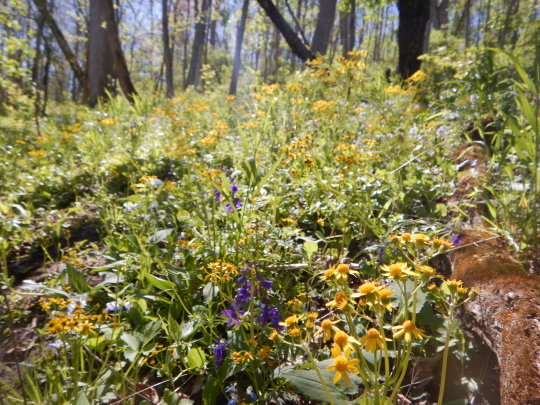
Packera obovata, Golden Roundleaf Groundsel and Delphinium tricorne, Dwarf Larkspur
#Ohio#wildflowers#plantblr#botany#kawaii#plants#meadowcore#cottagecore#Forest#forestcore#camassia#camassia scilloides#packera#packera obovata#delphinium tricorne#Delphinium
13 notes
·
View notes
Text
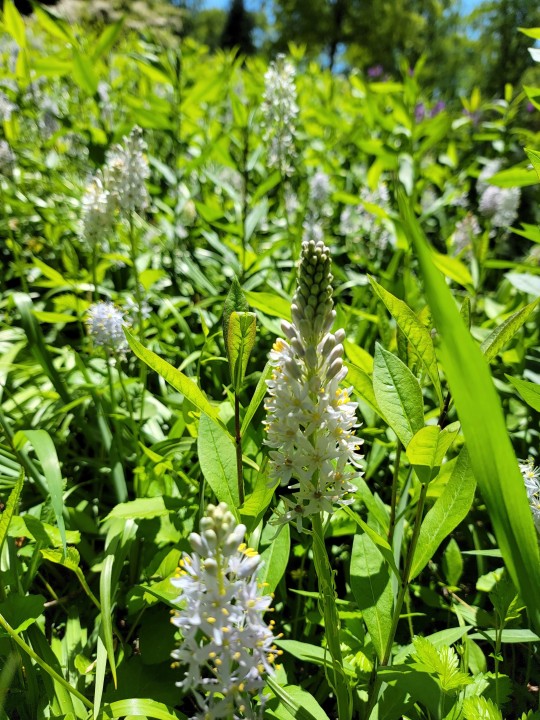
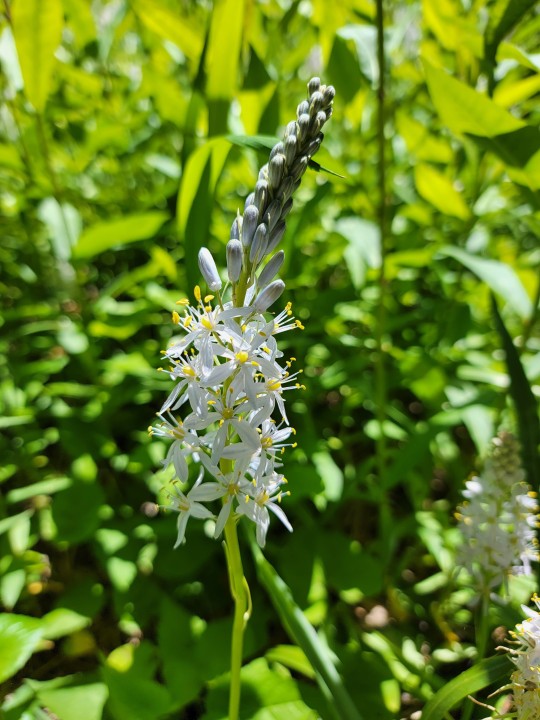

Eastern Camas in a Meadow - May 6th 2023
#camassia scilloides#eastern american native flowers#camas#nature#meadow#delaware#mt cuba#original phography#photographers on tumblr#spring
16 notes
·
View notes
Photo

Wild hyacinth (Camassia scilloides). Prophetstown State Park, Indiana [OC]
0 notes
Photo

Wild Hyacinth (Camassia scilloides)
The Arb, WI, 5-31-17
#wild hyacinth#camassia sciolloides#flower#wildflower#original photographers#imiging#photographers on tumblr
13 notes
·
View notes
Text
It’s Our Big Rock. So What If It’s Not the Biggest Rock in the World?
Big Rock Tai Chi Club, May 2020
I have spent nearly 20 years at the Big Rock corner of Louisville’s Cherokee Park. I meet here regularly with my Big Rock Tai Chi Club to practice Yang Family-Style Tai Chi. Big Rock is not our exclusive Shangri-La, as it is open to families, picnickers, plein air painters, guitar pickers, skulking teenagers, nature lovers and us.
The Big Rockers (my tai chi group) has grown smaller in the last few years, but our energy (chi) is undiminished. Nine or fewer of us meet now with Yong You, our friend and teacher.
Big Rock Tai Chi Club on the April 2010 celebration of World Tai Chi Day. Group arranged by Dan Wibbels; photo by Terry Meiners.
Here at Big Rock, I have made close friends, improved my health and found a deep sense of belonging.
youtube
Lloyd Kelly, a member of our group, demonstrates the 16-posture Tai Chi form, next to a twisting white mulberry, along the banks of Beargrass Creek.
People who truly inhabit a place are culturally adapted to that particular region or ecosystem. They know the plants, animals, weather, waters, soils—and draw their identity, lifeways and material culture—individual and collective—from that place.
–Gary Snyder
Big Rock, along the middle fork of Beargrass Creek, at the eastern fringe of the Olmsted-designed Cherokee Park, connects Louisvilleans to nature and to one another.
Our group sways in a choreography of slow, elegant moves with magical names like Brush Knee Push, Part the Wild Horse’s Mane and Repulse the Monkey. Bicyclists, joggers, parks employees, moms, dads and little kids stare at us curiously. Big Rock is full of eye-openers.
The geologic underpinnings of Big Rock began in the Silurian period. Thick slabs of Louisville limestone and Waldron shale were laid down 400 million years ago. John James Audubon admired Beargrass Creek; Shawnees depended on it.
Frederick Law Olmsted was hired to design and build a series of parks and parkways in Louisville, including Cherokee Park and Big Rock in the late 19th century. ”I never saw a park in my life which has as many natural advantages as the property just purchased,” Olmsted wrote in 1891.
Forsythia suspensa, late March
Walk the well-traveled trail, adjacent to the pavilion, and you’ll find the Big Rock that was dislodged from the steep cliff long before anyone was taking notes. It is nowhere close in size to massive boulders, two-stories high, on Yunnan’s Jinsha River near Tiger Leaping Gorge, but this is our little Beargrass Big Rock.
Beargrass, wild hyacinth (Camassia scilloides) in May
Botanist Julian Campbell unraveled the origins of the name beargrass in a fascinating story called Beargrass in the Bluegrass: Rediscovery of Ecological Meaning for Wild Hyacinth (Camassia scilloides):
“Until now, the origin of the name of Beargrass Creek in has been mysterious. The first written record was as ‘Rotten Cr. Or Bear Grass C.’ on Lewis Evans map of 1755. There is no evidence that ‘beargrass’ was a corruption of the French ‘La Barre Grosse Crique’ for ‘The Big Bar Creek,’ which has been suggested since the creek’s mouth is just above the Falls of the Ohio River. Instead, Otto Rothert theorized in1927 that the name was based on the plant Yucca filamentosa, often known as beargrass, which he stated was plentiful in the Virginia colonies. However, there is no botanical evidence that Yucca is native to Kentucky…During the 18th century, ‘beargrass’ throughout the central Ohio Valley was probably Camassia scilloides, eaten by bears and humans alike. “
Yucca filamentosa and the southern Appalachian Xerophyllum asphodeloides (beartongue) were less edible or even toxic, according to Campbell.
Water willow (Justicia americana) in June
The botanist Pat Haragan, who is a collaborator with Julian Campbell, met me near Big Rock a few weeks ago. Pat is the author of The Olmsted Parks of Louisville: A Botanical Field Guide and Weeds of Kentucky and Adjacent States. She has a sharp eye and notices plants I easily overlook. I can spot cigar trees, elderberries, common milkweed and even an occasional devil’s-dipstick mushroom, but she sees so much more on a short walk that I have either ignored or not seen.
Elderberry (Sambucus canadensis) in June
Devil’s dipstick, elegant stinkhorn (Mutinus elegans in September
Pat tells me about the herbaceous water willows (Justicia americana) and points to bottle brush grass (Elymus hystrix), and the diminutive and indestructible path rush (Juncus tenuis). She knows where there is a Cherokee Park hillside, nearby, carpeted with spring-flowering beargrass (Camassia scilloides).
Note to Allen: Keep your eyes peeled next spring.
There have been mornings when my conscience nags at me to tend the garden instead of practicing tai chi at Big Rock. The garden needs perpetual care, but I have habitually slowed down, in order to be with friends and enjoy the natural beauty at Big Rock for a little while. I quiet my mind, move slowly and try to avert sideways glances to see what other park visitors are doing.
The Big Rock
Tai chi works wonders. On the drive home, with my body and soul soothed, and cocktail hour in the offing, I am startled when I look into the rear-view mirror and find four cars stacked up behind me. I am going 15 mph. I hit the gas and zoom on.
It’s Our Big Rock. So What If It’s Not the Biggest Rock in the World? originally appeared on GardenRant on July 8, 2020.
The post It’s Our Big Rock. So What If It’s Not the Biggest Rock in the World? appeared first on GardenRant.
from Gardening https://www.gardenrant.com/2020/07/its-our-big-rock-so-what-if-its-not-the-biggest-rock-in-the-world.html via http://www.rssmix.com/
0 notes